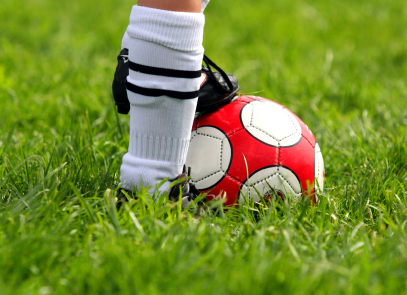 Each year, more than 477,500
soccer-related injuries are treated in hospitals, doctors' offices,
clinics, ambulatory surgery centers and hospital emergency rooms.
Each year, more than 477,500
soccer-related injuries are treated in hospitals, doctors' offices,
clinics, ambulatory surgery centers and hospital emergency rooms.
The American Academy of Orthopaedic Surgeons offers the following youth soccer injury prevention tips:
-
Always take time to warm up and stretch. Research studies have shown that cold muscles are more prone to injury. Warm up with jumping jacks, stationary cycling or running or walking in place for 3 to 5 minutes. Then slowly and gently stretch, holding each stretch for 30 seconds.
-
Wear shin guards to help protect your lower legs. Soccer tournament records have shown that most players who sustained lower leg injuries were not protected by adequate shin guards.
-
Wear soccer shoes (a/k/a boots) with molded cleats or ribbed soles. Shoes with screw-in cleats often are associated with a higher risk of injury. However, shoes with screw-in cleats should be worn when more traction is needed, such as on a wet field with high grass.
-
Use synthetic, nonabsorbent balls on wet playing fields. Leather balls can become water-logged and very heavy when wet, putting players at high risk for injury.
-
Don't crawl or sit on the goal or hang from the net. Injuries and deaths have occurred when goals have fallen onto players.
-
Soccer goals should be well padded and properly secured. Padding the goal decreases the incidence of head injuries when the goalie and other team members collide with the posts.
-
The playing surface must be kept in good condition. Holes on the playing field should be filled, bare spots reseeded, and debris removed.
-
Be knowledgeable about first aid and be able to administer it for minor injuries, such as facial cuts, bruises, or minor tendinitis, strains, or sprains.
-
Be prepared for emergency situations and have a plan to reach medical personnel to treat injuries such as concussions, dislocations, elbow contusions, wrist or finger sprains, and fractures.








